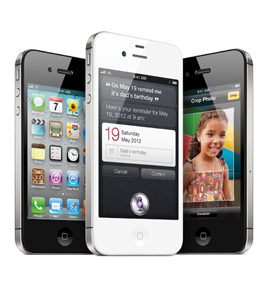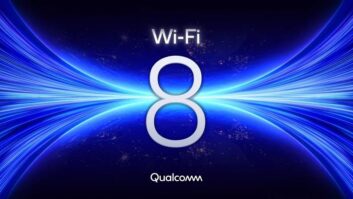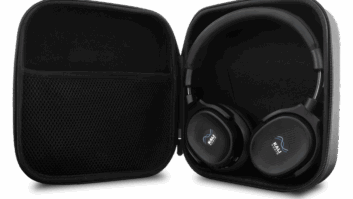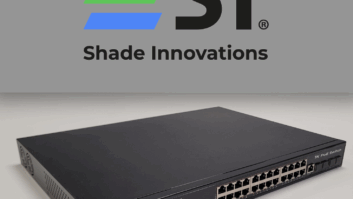Overland Park, Kan. – Sprint’s activation
of 1.8 million iPhones in the fourth quarter exceeded company expectations
despite “unusual” iPhone discounting by AT&T and Verizon, Sprint CEO Dan
Hesse said in releasing fourth-quarter financial results.

The carrier also reported its
best quarterly increase in six years in net new subscribers, with the number of
net new subscribers rising 26.6 percent from the year-ago period to 1.62
million. That gain, which is the seventh consecutive quarterly gain following
years of subscriber losses, expanded the company’s year-end subscriber base to a
record 55 million, up 10.3 percent from year-end 2010.
At 5.1 million, the number of net
new subscribers for the full year was the biggest since 2001 and was up
substantially from 2010’s 1.78 million.
Despite the subscriber gains and a
7.6 percent increase in wireless revenues to $7.92 billion for the quarter,
Sprint’s wireless operations posted a fourth-quarter net operating loss of $500
million, up from a year-ago loss of $267 million and in contrast to a
third-quarter operating profit of $131 million. For the year, wireless
operating losses shrank to $256 million from 2010’s loss of $1.23 billion.
During the quarter, Sprint chose
not to participate in “unprecedented” discounting of iPhones and other handsets
despite what Hesse called a level of handset discounting that was “unusual,
even by traditional seasonality history.” iPhones were discounted by $30 or
more, and some 4G LTE phones were sold “at very low rates,” he said.
Though iPhone activations
exceeded Sprint’s expectations, Sprint’s iPhone activations in the quarter were
significantly below Verizon’s 4.3 million iPhone activations and AT&T’s 7.6
million. Some of the difference can be traced Sprint’s October 14 launch of the
iPhone, whereas AT&T and Verizon had been selling iPhones throughout the
quarter.
In other fourth-quarter sales
metrics, the carrier said 86 percent of phones activated on the Sprint network by
retail postpaid subscribers were smartphones, boosting the number of postpaid
subscribers using smartphones to 66 percent. In contrast, 56.8 percent of
AT&T’s retail postpaid subscribers were using smartphones at the end of the
year, and 44 percent of Verizon’s retail postpaid subscribers were.
The costs of subsidizing iPhone
sales and costs of acquiring iPhone subscribers was around $630 million during the
quarter, the company said. iPhone costs and the $54 million in costs to revamp
Sprint’s network infrastructure reduced the quarter’s OIBDA margin by an
estimated 8.8 percent points to a reported 10.8 percent, the company said.
The costs of selling iPhones and
meeting Sprint’s volume commitment to Apple will be more than offset by iPhones’
network efficiency, the ability to attract new subscribers, expected lower
churn rates among iPhone subscribers, and lower calls to customer care, said
Hesse. Forty percent of activated iPhones went to subscribers new to the Sprint
network, he noted.
Sprint previously said it pledged
to buy a minimum of $15.5 billion worth of iPhones over four years.
In announcing other financial
results, Sprint said its wireline and wireless networks combined posted a net
loss of $1.3 billion, up from the year-ago loss of $929 million, but for the
full year, consolidated net losses fell to $2.89 billion from $3.47 billion.
However, with wireless’ annual
operating losses shrinking, Hesse said Sprint’s wireless turnaround is entering
a second phase in which the company is investing for future growth.
He pointed to gains in multiple
metrics, such as the seventh consecutive quarter of net new postpaid
subscribers on the Sprint network to 539,000, compared with a year-ago 453,000,
and a full-year gain of 1.28 million compared with 2010’s 734,000 gain. The
number of subscribers of the 2G iDEN network, which Sprint will begin to shut
down this year, continued to lose subscribers at a rate of 770,000 for the
quarter and 3.16 million for the year.
In its Sprint-network prepaid subscriber
base, the carrier posed a net gain of 899,000 compared with the year-ago gain
of 1.41 million, but for the year, Sprint-network prepaid net adds hit 2.7
million, up from 2010’s 994,000.
In other comments, Sprint
executives said it will light up two more markets with 4G LTE and improved 3G
service in mid-2012 than previously announced. The two new markets, Kansas City
and Baltimore, will join Houston, Dallas, San Antonio and Atlanta. Three 4G LTE
devices will be available for the launches.
The executives also noted that
since mid-2011, Sprint has been selling CDMA phones that not only operate in
Sprint’s 1900MHz band but also in the lower 800MHz band to take advantage of
that spectrum when iDEN cell sites are taken off-line. Those CDMA phones will
benefit from an immediate improvement in service when CDMA is implemented at
800MHz, the company said.













